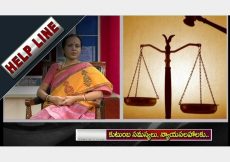
As a certified therapist, I have had the privilege of working with numerous children and their families, witnessing firsthand the transformative power of Cognitive Behavioral Therapy (CBT). In my practice, I frequently encounter young clients struggling with various emotional and behavioral challenges, ranging from anxiety and depression to ADHD and behavioral disorders. Here, I would like to share some of my experiences and insights into how CBT can be effectively applied to help children navigate these difficulties.
Understanding CBT for Children
CBT is a structured, evidence-based form of psychotherapy that focuses on identifying and changing negative thought patterns and behaviors. For children, this approach is adapted to be developmentally appropriate, engaging, and often, of course, involves the active participation of parents or caregivers.
The First Steps: Assessment and Rapport Building
When a child first comes to my practice office, the initial sessions are dedicated to building rapport and trust. This is crucial because a child needs to feel safe and comfortable to open up about their thoughts and feelings. During these sessions, I also conduct a thorough assessment to understand the child’s specific issues, which involves talking to the child, parents, and sometimes teachers.
For instance, I recently worked with an 8-year-old, let’s call her Sarah, , who had been experiencing intense anxiety about attending school. Her parents were at a loss, as Sarah’s anxiety was affecting her academic performance and social interactions. By creating a safe and welcoming environment, I was able to gain Sarah’s trust and better understand the root causes of her anxiety.
Techniques and Strategies in CBT for Children
- Cognitive Restructuring
One of the core techniques of CBT is cognitive restructuring, which involves helping children identify and challenge negative thought patterns. For children like Sarah, who might believe that “everyone at school hates me,” this process involves gently challenging these thoughts and encouraging more balanced thinking. We might use thought records or visual aids to help Sarah recognize that her thoughts are not always accurate reflections of reality.
- Behavioral Interventions
CBT also involves behavioral interventions to help children change problematic behaviors. For example, I often use exposure therapy for children with anxiety. In Sarah’s case, we gradually exposed her to school-related situations that caused her anxiety, starting with less stressful scenarios and slowly moving to more challenging ones. This gradual exposure helped Sarah build confidence and reduce her anxiety over time.
- Relaxation Techniques
Teaching children relaxation techniques is another essential component of CBT. Techniques such as deep breathing, progressive muscle relaxation, and mindfulness can help children manage their physiological responses to stress. I frequently incorporate fun and engaging activities, like “belly breathing” with a stuffed animal, to make these techniques accessible and enjoyable for young children.
- Skill Building
CBT often includes skill-building exercises to improve social skills, problem-solving, and emotional regulation. For children with ADHD, for instance, I work on organizational skills and impulse control. Through role-playing and games, children practice these skills in a supportive and structured environment.
Parental Involvement
In my experience, involving parents in the therapeutic process is crucial for the success of CBT with children. Parents are taught to reinforce the skills their child is learning in therapy at home. They learn to recognize and modify their responses to their child’s behavior, creating a consistent and supportive environment.
For example, with Sarah’s parents, we worked on strategies to reduce their own anxiety about her school performance, which in turn helped Sarah feel more supported and less pressured.
Success Stories and Ongoing Challenges
One of the most rewarding aspects of my work is seeing the positive changes in my young clients. Sarah, after several months of CBT, was able to attend school regularly and even started participating in classroom activities and making new friends. Her parents reported a significant improvement in her overall mood and family dynamics.
However, it is important to acknowledge that progress can be slow and challenging. Each child is unique, and what works for one may not work for another. Patience, creativity, and a flexible approach are essential.
Conclusion
In conclusion, Cognitive Behavioral Therapy offers a robust and effective framework for helping children overcome emotional and behavioral challenges. As a therapist, I have seen how this approach can empower children, giving them the tools to understand and manage their thoughts and behaviors. While the journey can be demanding, the positive outcomes make it incredibly worthwhile. Whether dealing with anxiety, depression, ADHD, or other issues, CBT provides children and their families with hope and practical solutions for a brighter future.


































